Invented by J. Russel Teagarden, Michael Clotz, David Angaran, Charlotte Kenreigh, Express Scripts Strategic Development Inc
A computer-implemented patient medication review system is a software application that enables healthcare providers to review a patient’s medication history, identify potential drug interactions, and recommend appropriate treatment options. The system uses algorithms and data analytics to analyze a patient’s medication regimen and provide personalized recommendations based on their medical history, allergies, and other relevant factors.
The market for computer-implemented patient medication review systems has been growing steadily over the past few years, driven by the increasing demand for personalized healthcare services and the need to reduce medication errors. According to a report by Grand View Research, the global market for medication management systems is expected to reach $5.7 billion by 2025, growing at a CAGR of 20.5% during the forecast period.
Managed care organizations, healthcare providers, and pharmacies are the primary users of computer-implemented patient medication review systems. These systems help them to streamline their medication management processes, reduce medication errors, and improve patient outcomes. For instance, healthcare providers can use these systems to identify potential drug interactions and recommend alternative medications or dosages that are safer and more effective for their patients.
Pharmacies can also use computer-implemented patient medication review systems to improve medication adherence and reduce the risk of adverse drug events. These systems can alert pharmacists when a patient’s medication regimen changes or when they are due for a refill, ensuring that patients receive their medications on time and in the correct dosage.
In conclusion, the market for computer-implemented patient medication review systems is growing rapidly, driven by the increasing demand for personalized healthcare services and the need to reduce medication errors. Managed care organizations, healthcare providers, and pharmacies are the primary users of these systems, which help them to streamline their medication management processes, reduce medication errors, and improve patient outcomes. As the healthcare industry continues to evolve, computer-implemented patient medication review systems are likely to become an essential tool for healthcare providers and pharmacists.
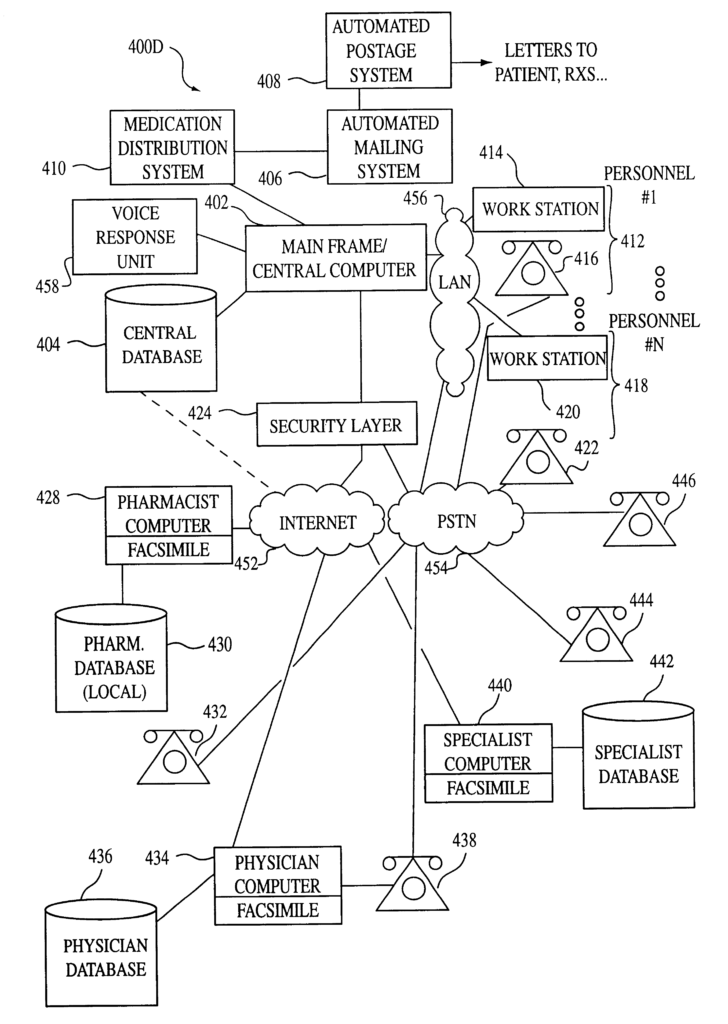
The Express Scripts Strategic Development Inc invention works as follows
An interactive computer-assisted method reviews and analyzes a patient’s medication using a computer and the user associated with it. This method involves pre-selecting patients in order to create a preliminary list of eligible patients for the interactive computer supported method. Then, the filtering of the preliminary set to identify and form a secondary group of patients who are more likely to benefit from the interactive computer assistance method responsive to the second predetermined criteria. The method also involves the steps of enrolling patients from the secondary list of patients and communicating with them to get information that will help the user determine whether medication and therapy issues are relevant. Preliminarily evaluating the therapy and medication issues is necessary to determine if they are relevant to the information and communicating with a physician. This method includes steps to determine whether therapy and/or medication are relevant and suggest therapy changes, medication modifications, or no changes for patients.
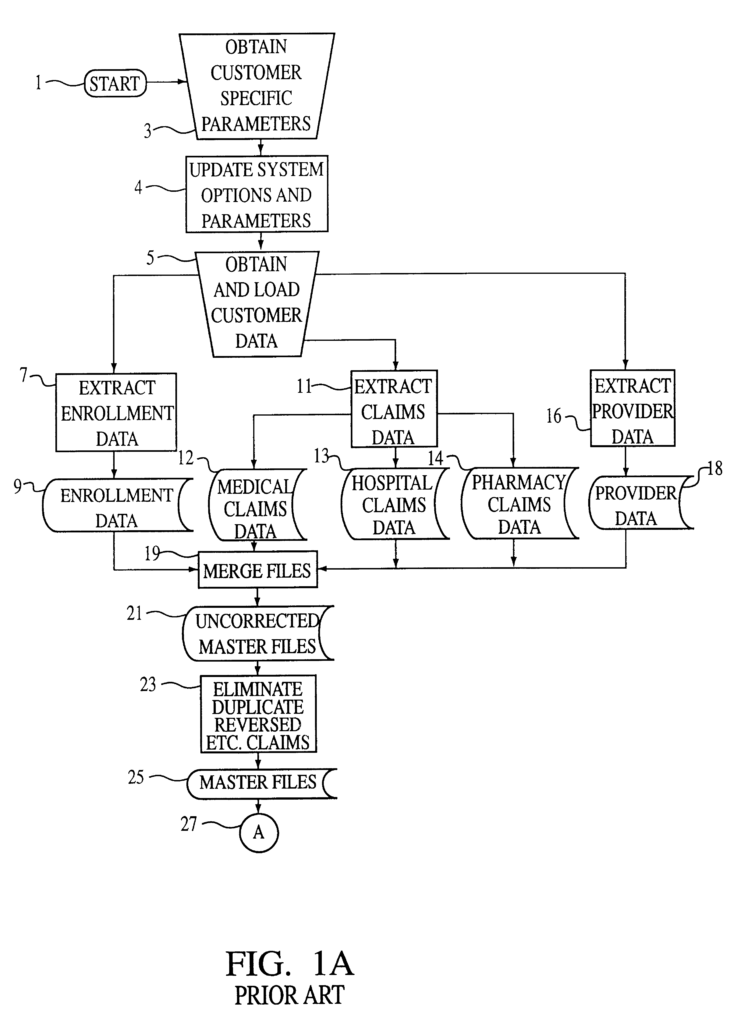
Background for Computer-implemented patient medication review system for managed care, health care, and/or pharmacy industries
1. “1.
The present invention relates to a computer-implemented and/or automated process for controlling drug and health care spending and/or usage while improving or maintaining quality care for a patient population. The invention is more specifically about a computer-implemented and/or automated process for designing and ensuring appropriate patient care. This includes the collection and/or selection of detailed information about a patient’s medication use, medical history and satisfaction as well as their involvement in the decision-making process. In the computer-implemented and/or automated process, the patient can be prescribed multiple medications to treat multiple diseases.
2. “2.
Healthcare costs make up a substantial portion of the Gross National Product in the United States and are rising at an extraordinary rate. One reason for these rising costs is the inability to coordinate and target appropriate medication and/or treatment for each patient. We have concluded that many people lack access to the services necessary to coordinate medical care and information.
When combined with inability to prescribe appropriate medication or treatment, many people delay or are prevented seeking medical attention due to cost, time constraints or inconvenience. Many diseases could be avoided if the public had easy, universal access to medical information. Many patients could be prevented from getting into advanced stages of disease if they were treated and diagnosed early. These advanced stages of illness make up a large portion of the healthcare costs in our country. It is evident that both the United States and the rest of the world are facing enormous health-related problems.
Ask-A-Nurse is a previous attempt to solve your health care problems. A group of nurses provides health information via telephone round-the-clock. An individual with a medical issue calls 800 and tells the nurse what the problem is. A nurse can use a computer to provide general or diagnostic information about the complaint or ailment mentioned by the caller. The nurse can then refer the caller directly to a doctor on a computerized referrals list. Ask-A-Nurse provides patient referrals for client hospitals. Personal Health Advisor, a managed care option that allows the caller to receive prerecorded messages about health topics 24 hours per day, is similar.
These systems have several problems. These systems are expensive because a nurse must answer every telephone call. To use the service, the caller might need to be a member of a participating health plan. Importantly, the system is only designed to address reactive problems and does not eliminate the possibility that such a condition may occur in the future. Fourth, these systems are not equipped with the necessary knowledge to give meaningful guidance in specific areas, such as drug use.
Another system that provided health care advice and answered questions in their own homes is an alternative health system. This service may be provided by a health maintenance organization (HMO), to members who live in a specific area. An HMO member can connect a small box of toaster size to a phone and call a toll-free 800 number to get home advice. The box has a keyboard, which allows the user to answer questions related to their symptoms. The answers will determine whether the user is advised to use a home remedy or to call a doctor or nurse. Or, they may be scheduled for an examination. The system can only respond to the user’s reactive issues and does not eliminate the possibility that such an issue could occur in the future.
Another end of the spectrum are several attempts to analyze retroactively using hindsight the appropriateness and quality of the provided medical care for cost and quality. U.S. Pat. No. No. 5.544,044 to Leatherman, which is incorporated herein as a reference, refers to a software-based information system that analyzes health care claims records of an enrolled population (e.g. HMO, Medicaid) in order to report on quality care. It does this based on national quality indicators or guidelines for medical practice. FIGS. FIGS.
The process is usually requested by a customer who is a health maintenance organisation, indemnity insurance (e.g. Blue Cross), large self-insured employer groups, or government program (e.g. Medicaid). The first 3rd step is to get the customer’s specific parameters. This includes the time frame the customer would like to analyze, as well as whether they want data broken down by providers or other grouping variables. Next, the fourth step is to modify the system parameters and options according to customer requirements. The system then obtains and loads 5 customer data. This usually includes the customer’s health care claims data from a specific period of time, as well as enrollment data.
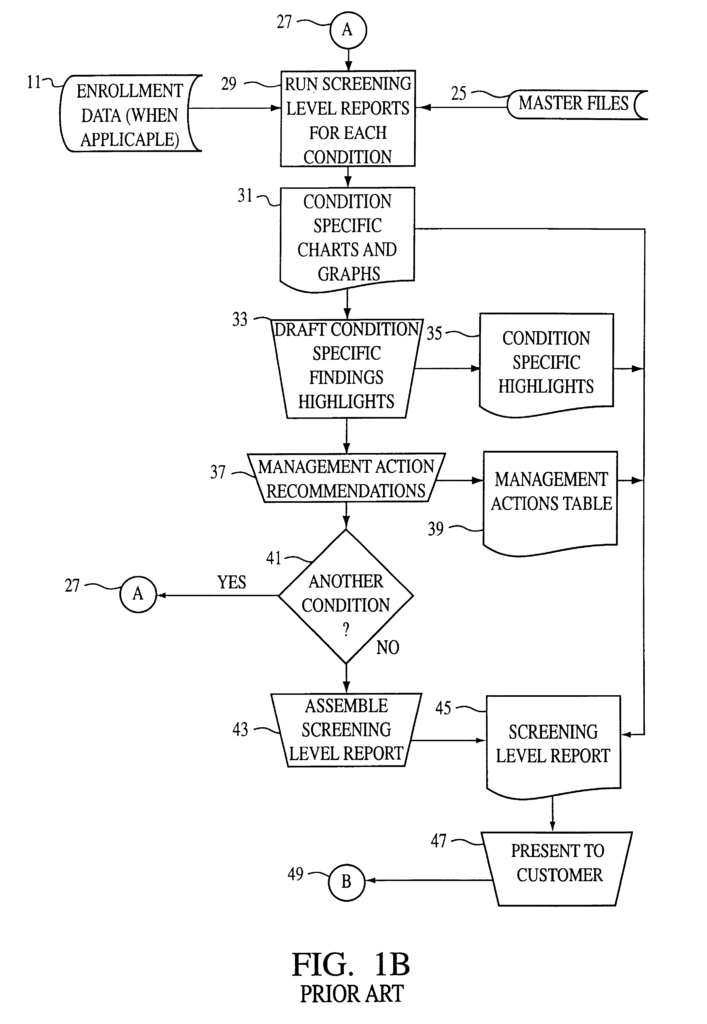
The enrollment data 7 is used to identify enrollees that meet the predefined enrollment criteria. The enrollment data 9 consists of one record for each enrollee. The relevant claims data 11 are then extracted from the customer data base. They are linked to create the required health records. “The claims data includes claims records 12 for medical professional services, claims records 13 for hospital services, and claims 14 for pharmacy purchases.
If requested by the customer, provider-specific information is also extracted 16 from customer data. This allows the provider of services or products to perform the analysis. To create uncorrected master file 21, the resulting files can be merged 19. 23 Duplicate claims and claims that were reversed during the claims adjudication process are exempted. This creates a master file 25 with records of health care claims.
Step 29 is the application of the definitions of the health condition to identify the population with that condition. Then, a analysis of claims records for this population (a subset from the master files 25,) under the defined quality-care criteria. The report is the result of step 29’s analysis. It includes charts and graphs 31 that report statistically observed quality care data for the population defined as having the interest. A written analysis reports, from a care quality perspective, statistical results worthy of being highlighted 33, 35. And a report with recommendations for actions to improve the quality of health care 37, 39.
Analysing multiple health conditions is done iteratively using the software at step 41. The process of producing charts and graphs 31 to 37, reports 35, and 39, as well as creating charts and graphs 31, 33 and 37, and then reports 35, 39, is repeated. Next, the definition of the next health condition is used to identify the population with that condition. Finally, an analysis of claims records for the population according the quality criteria for the next condition. Once all of the health conditions have been processed, 43 reports are created for each condition and presented to the customer as a quality-based claim report 45.
At step 51 the system determines if there is a need for detailed analysis. If there is no need, data collection and analysis ceases. If a need exists for a detailed analysis of any condition, the population that has been identified is subject to sampling 55. This will determine which enrollees additional information will be required. The provider consents to the medical records being abstracted 59, with a special focus on the events related to the health care condition under investigation. This results in a completed medical record abstract form 61.
This abstracted data is then entered into system 63 via personal computer to create a medical record abstract file 65. Charts and graphs that report statistically observed data for the population defining the health condition of interest 69, and a report with recommendations for actions to improve quality health care 71,73. For multiple health conditions, detailed analysis of medical records may be required. In this case, the previous steps will be repeated until charts or graphs reporting statistically observed data (69) and a report with recommendations for actions to improve quality health care (71, 73) are created.
After all specified health conditions have been processed, the reports for each condition are compiled 77 into a detailed level report 79 which is presented to customer 81. The process ends 83. This system has one problem: it does not analyze?after-the fact? The quality and cost of the medical care delivered.
U.S. Pat. No. No. 5,660,176 is Iliff and is incorporated herein as a reference. It is directed at a computerized medical diagnosis and treatment advice system. Referring to FIG. 2 shows the components of the computerized medicine diagnostic and treatment advice system 100. A personal computer (PC), 102 has a number of components in an enclosure 104. One of the telephone lines 106 connects the computer 102 to the public telephone network. One of the telephone lines 106 can be shown being switched over network 108 to connect to a telephone 110 used by someone who needs medical advice (user 112).
The system runs on a PC 102 with a Microprocessor. A voice processing board (122) is used for telephony functions. It is based on a digital signal processor (DSP). One to four telephone lines (106) connect to the VP Board 122. Based on the number of phone lines connected to the computer 102, a plurality VP boards 122 may be included in the computer 102. Voice Processing Corporation’s speech recognition board VPRO-4 124 (also DSP-based) is used to recognize speech.
The VR board 124, and the VP Board 122 connect to an industry-standard architecture (ISA) bus 126. The VP board 122 can also be connected to a VPRO Adapt board 128 via the analog audio bus 130, which is known as Analog Extension Bus. The adapt board 128 also connects to the digital audio bus 132. The VR board 124 can also be connected to the digital audio bus number 132. The Adapt board 128 converts analog to digital signals to a VPC-proprietary, digital pulse code modulation format (PCM).
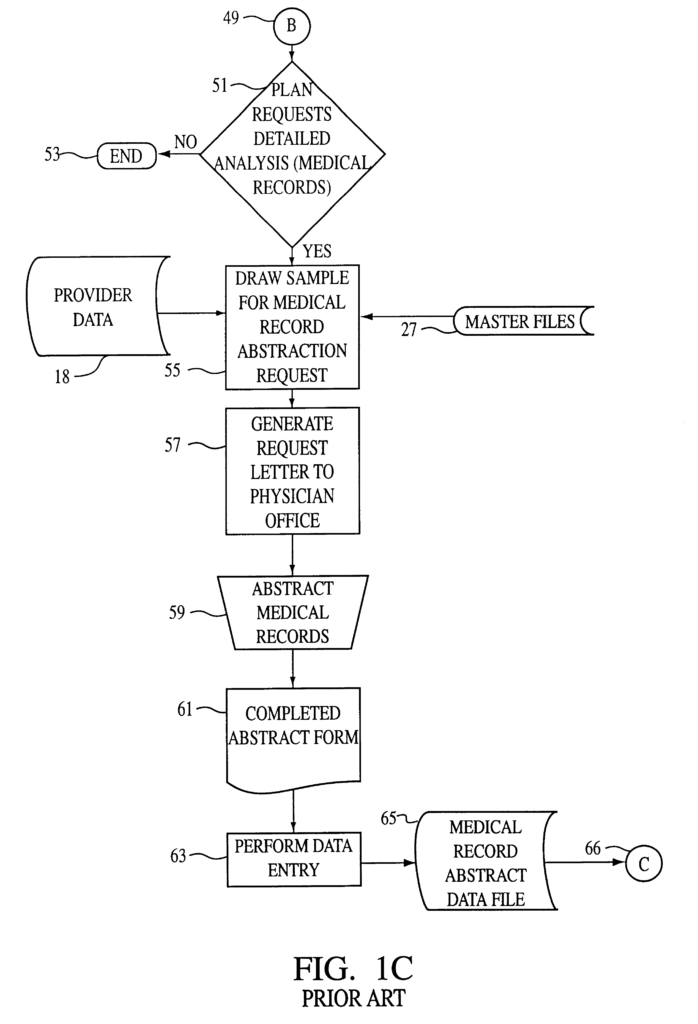
A video adapter board (136), preferably at VGA resolution or higher, interconnects with a video monitor (138). A serial communication circuit 140 connects to a pointing device such as a mouse. In another embodiment, a parallel communication circuit could be used instead of circuit 140. A keyboard controller circuit, 144 interfaces with a keyboard 146. An adapter for small computer systems interfaces (SCSI), provides 150 SCSI buses to which is attached a hard drive of 500 Mb or more 152.
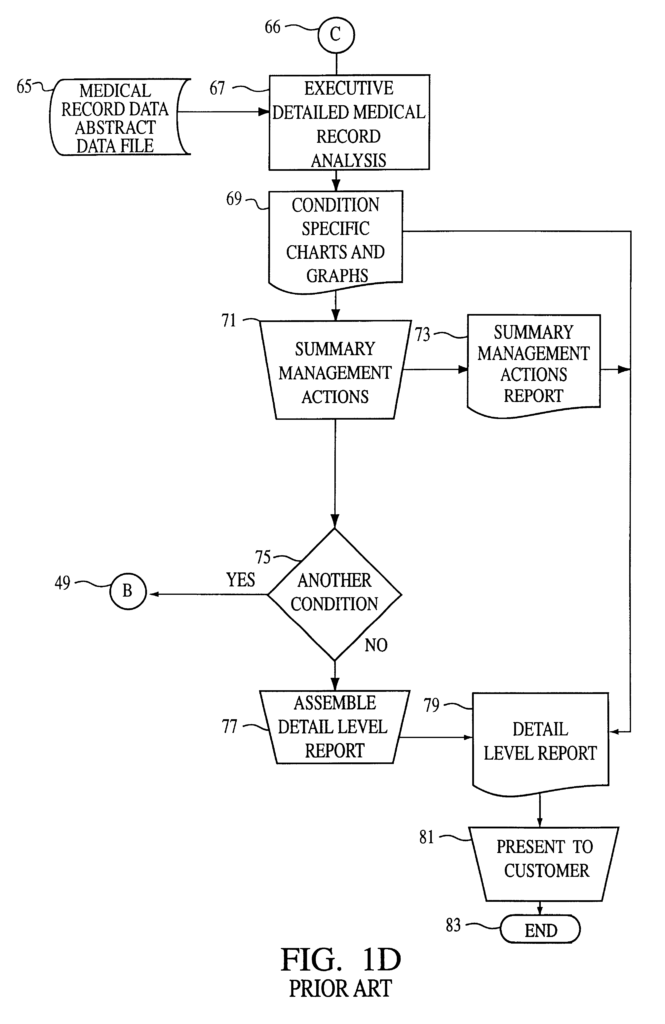
Click here to view the patent on Google Patents.
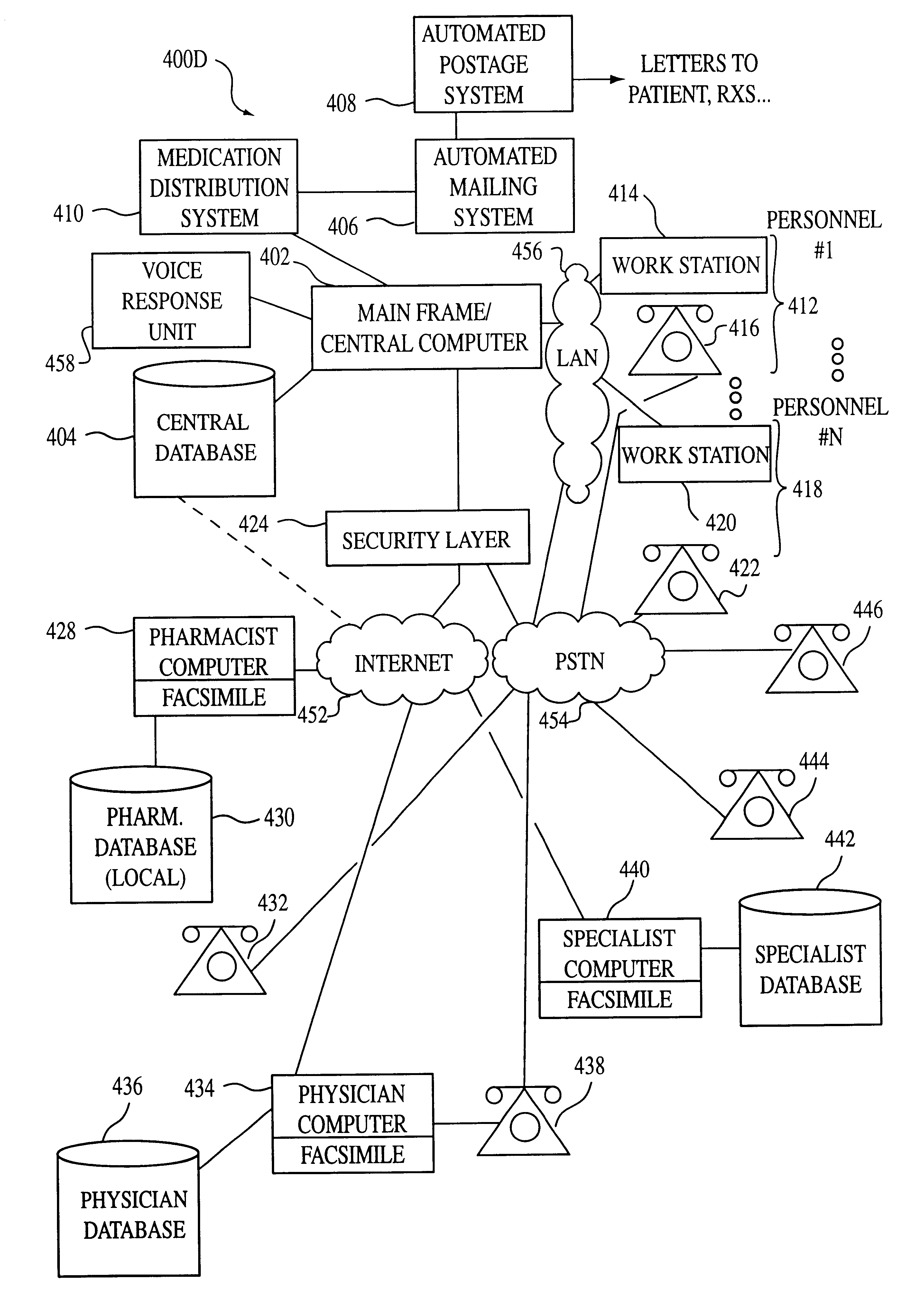
Leave a Reply